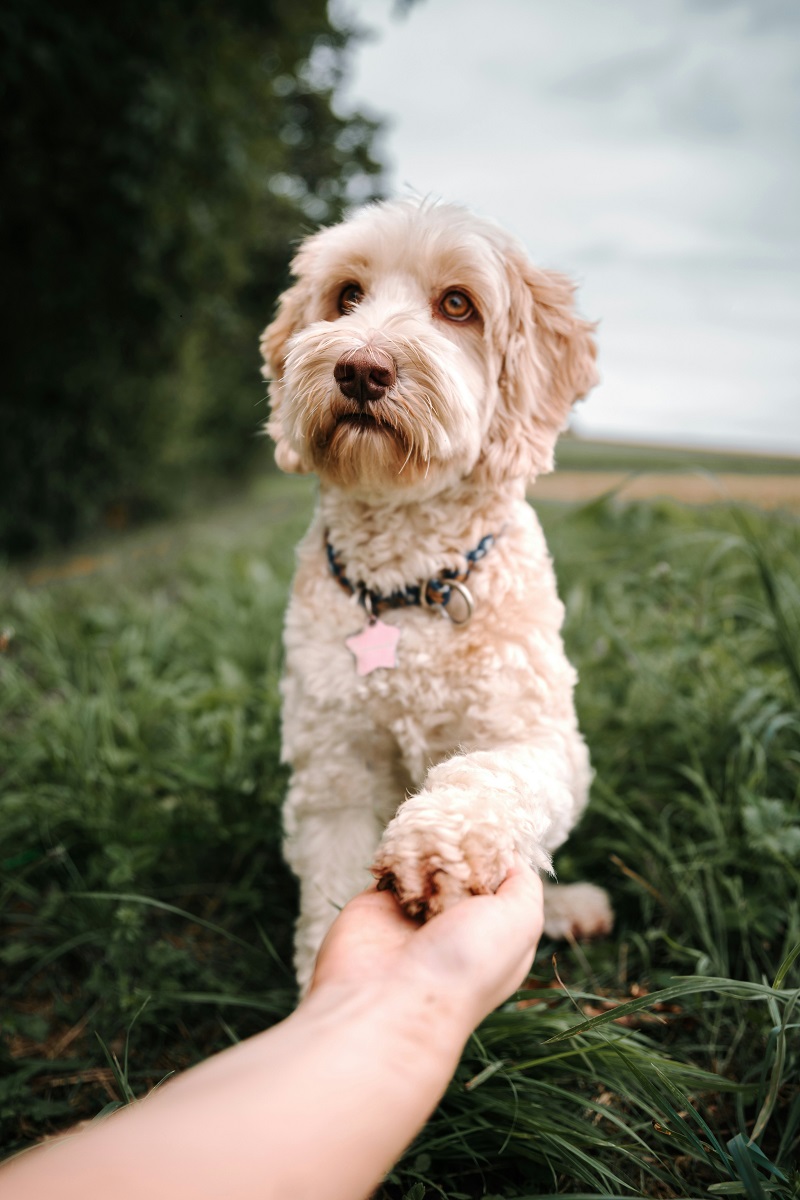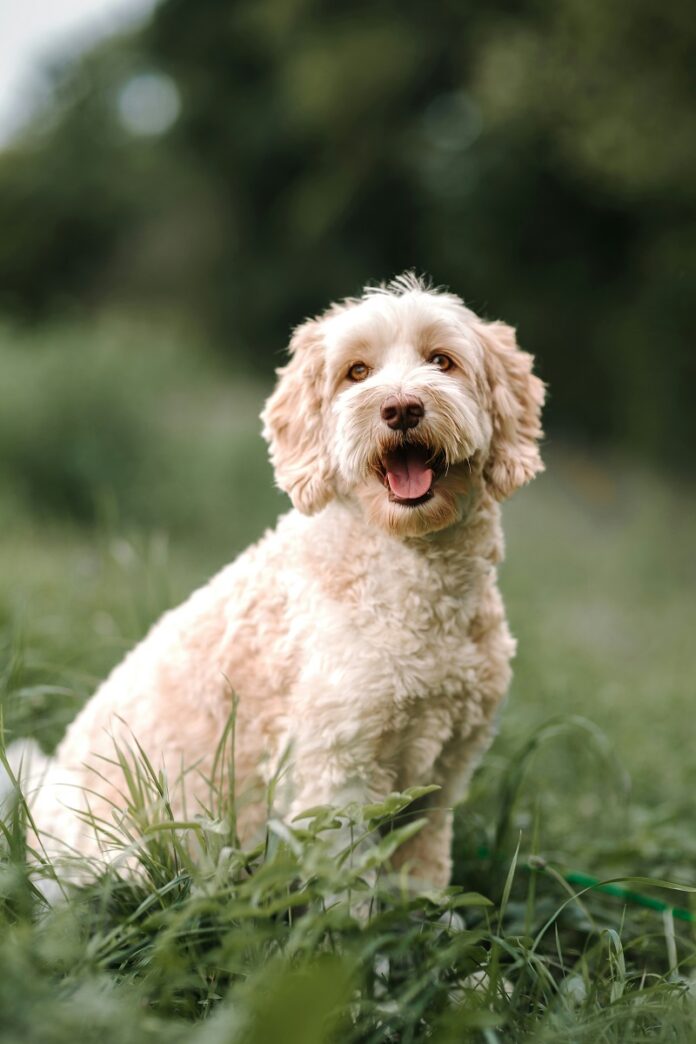Summary: The Labradoodle is a popular designer dog breed resulting from a cross between a Labrador Retriever and a Poodle. Known for its intelligence, friendly nature, and often hypoallergenic coat, the Labradoodle has become a favorite among families, allergy sufferers, and dog lovers alike. Labradoodles come in various sizes and coat types depending on their Poodle parentage, and they thrive on human interaction, exercise, and mental stimulation. Their social, affectionate temperament and low-shedding coats make them ideal companions for both active individuals and families with children.
The Labradoodle is one of the most beloved designer dog breeds in the world today. A cross between the loyal Labrador Retriever and the highly intelligent Poodle, this breed offers the best of both worlds. With their gentle demeanor, allergy-friendly coats, and playful personality, These Species have found their way into the hearts and homes of dog lovers around the globe. But before you decide to bring one into your family, it’s essential to understand their background, characteristics, care needs, and suitability for your lifestyle.
Origin and History
The Labradoodle’s journey began in the late 1980s in Australia when Wally Conron, a breeding manager for the Royal Guide Dogs Association, was tasked with developing a guide dog for a woman whose husband was allergic to dog fur. The aim was to combine the trainability and temperament of a Labrador Retriever with the low-shedding coat of a Poodle. The result was a crossbreed that not only met those expectations but exceeded them in terms of popularity and versatility.
Initially, Labradoodles were bred as service and therapy dogs. Over time, their affectionate personality and hypoallergenic qualities made them highly desirable as family pets. Today, They are one of the most in-demand mixed breeds in the world.
Physical Appearance
Labradoodles come in three main sizes: standard, medium, and miniature. Their size largely depends on the type of Poodle used in the crossbreeding process. Standard Labradoodles typically weigh between 50 to 65 pounds and stand 21 to 24 inches tall. Medium ones usually weigh 30 to 45 pounds, while miniature can be as small as 15 to 30 pounds.
One of the most attractive features of the Labradoodle is its coat. There are three main coat types: wool, fleece, and hair. The wool coat is dense and curly, much like a traditional Poodle, and is the most hypoallergenic of the three. The fleece coat is soft, wavy, and luxurious, often considered the ideal coat due to its ease of maintenance and reduced shedding. The hair coat resembles that of the Labrador and tends to shed more, making it less ideal for allergy sufferers.
They also come in a wide range of colors, including cream, chocolate, black, red, apricot, silver, and multi-colored patterns. Their adorable, teddy bear-like appearance is one of the reasons they’re so irresistible.
Personality and Temperament
Friendly, outgoing, and sociable are just a few words describing the typical Labradoodle personality. They inherit the best behavioral traits from both parent breeds, making them ideal for families, individuals, and seniors. Labradoodles are known to be affectionate and love being around people. They are particularly good with children and get along well with other pets, making them an excellent choice for multi-pet households.
Their intelligence is another strong trait. Labradoodles are quick learners and enjoy engaging in problem-solving games and obedience training. They tend to bond strongly with their families and often follow their favorite humans from room to room. While they are generally well-behaved, they can develop separation anxiety if left alone for extended periods, so they do best in homes where someone is around most of the day.

Grooming and Maintenance
The grooming needs of a Labradoodle depend heavily on its coat type. Dogs with wool or fleece coats require regular brushing at least three to four times a week to prevent tangles and mats. Professional grooming is also necessary every six to eight weeks to maintain the coat’s condition and keep your Labradoodle looking neat and tidy.
In addition to coat care, Labradoodles need regular maintenance like all dogs. This includes trimming their nails every few weeks, brushing their teeth to prevent dental issues, and cleaning their ears regularly to avoid infections. Because their floppy ears can trap moisture, it’s important to dry them thoroughly after baths or swimming.
Exercise and Energy Levels
Labradoodles are active and energetic dogs that thrive in environments where they have space to run, play, and explore. They require at least 60 minutes of physical activity daily. This can include walks, runs, playing fetch, or engaging in dog sports like agility or flyball. They also enjoy swimming, a trait inherited from their Labrador ancestors.
Mental stimulation is just as important as physical exercise. Labradoodles are intelligent and curious, and they need interactive toys, puzzle feeders, or training sessions to keep their minds engaged. Without sufficient activity, they may become bored and develop destructive behaviors like chewing or digging.
Health and Lifespan
Generally speaking, Labradoodles are healthy dogs with a life expectancy of 12 to 15 years. However, like all breeds, they can be prone to certain health conditions. Common issues seen in Labradoodles include hip and elbow dysplasia, progressive retinal atrophy (PRA), allergies, ear infections, and Addison’s disease.
To reduce the risk of inherited health problems, it’s crucial to obtain a Labradoodle from a reputable breeder who performs genetic testing on both parent dogs. Regular veterinary checkups, a balanced diet, and appropriate exercise all contribute to a long, healthy life.
Feeding
Feeding your Labradoodle a high-quality, nutritionally balanced diet is vital for their overall well-being. Puppies should be fed a specially formulated puppy food to support their rapid growth, while adult Labradoodles need a diet rich in protein, healthy fats, and essential nutrients. Seniors may require lower-calorie foods to help manage their weight as they become less active.
Portion control is important, especially since Labradoodles can have hearty appetites. Obesity can lead to joint issues and other health problems, so it’s wise to measure food and avoid excessive treats. Fresh water should always be available, and dietary adjustments should be made based on your dog’s age, size, and activity level.
Training and Socialization
Thanks to their intelligence and eagerness to please, Labradoodles are a joy to train. They respond exceptionally well to positive reinforcement methods, such as treats, praise, and play. Early training is recommended to establish good behaviors and prevent problems like jumping or pulling on the leash.
Socialization is equally important. Introducing your Labradoodle to different people, places, and experiences at a young age helps build their confidence and reduces fear-based reactions. Enrolling in puppy classes or obedience training not only improves behavior but also strengthens the bond between you and your dog.
Labradoodle as a Family Companion
Labradoodles excel as family companions. They’re affectionate, patient, and adaptable, making them suitable for families with children, couples, and even active seniors. Their friendly nature means they rarely show aggression, though they may bark to alert you of strangers. While they are not the best guard dogs, their presence alone can be a comforting deterrent.
They do well in both houses and apartments, provided they get enough exercise and attention. Labradoodles love being part of the family and should not be kept outside or left alone for long hours.
Frequently Asked Questions
What is a Labradoodle?
A Labradoodle is a crossbreed dog created by mixing a Labrador Retriever and a Poodle, known for being smart, friendly, and often hypoallergenic.
Are Labradoodles hypoallergenic?
While no dog is completely hypoallergenic, Labradoodles are often recommended for allergy sufferers due to their low-shedding coats.
How big do Labradoodles get?
The size of a Labradoodle can vary depending on whether the Poodle parent was standard, miniature, or toy, ranging from 15 to 65 pounds.
Do Labradoodles shed?
Labradoodles shed very little compared to other breeds, but coat types can vary. Regular grooming helps manage any shedding.
Are Labradoodles good with kids?
Yes, Labradoodles are typically great with children due to their playful, gentle, and affectionate nature.
How long do Labradoodles live?
The average lifespan of a Labradoodle is between 12 to 14 years with proper care and regular vet checkups.
Are Labradoodles easy to train?
Yes, Labradoodles are intelligent and eager to please, which makes them highly trainable with consistent positive reinforcement.
Do Labradoodles need a lot of exercise?
Labradoodles are active dogs that need daily exercise and mental stimulation to stay healthy and happy.
Can Labradoodles be left alone?
Labradoodles can suffer from separation anxiety if left alone for long periods. They thrive in households where someone is often home.
What type of coat does a Labradoodle have?
Labradoodles can have curly, wavy, or fleece-like coats, and coat type varies depending on genetics from the Poodle parent.

